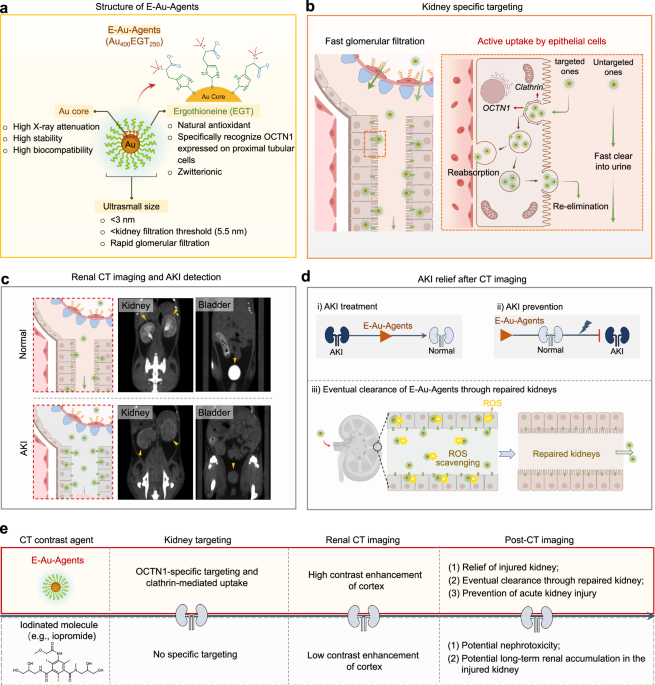Single Injection Nanoagent Shows Promise for Concurrent Kidney Imaging and Repair

Scientists are developing a novel nanoagent designed to simultaneously diagnose and treat kidney disease, offering a potential breakthrough in renal care. This innovative technology, highlighted in a recent social media post by Dr Singularity, targets damaged kidney tissue, provides clear visibility on CT scans, and actively repairs cells by reducing inflammation and stress. The prospect of a single injection for both diagnosis and therapy marks a significant advancement in nanomedicine.
The imaging capabilities of such nanoagents leverage the unique properties of nanoscale materials. Research indicates that various nanoparticles, including gold nanoparticles and polyoxometalate clusters, can be engineered for renal imaging. These agents can accumulate in specific kidney regions or be rapidly cleared, enabling non-invasive evaluation of kidney function and precise identification of injured areas through techniques like CT scans.
Beyond imaging, the therapeutic aspect of these nanoagents focuses on cellular repair and protection. Many nanomedicines, such as DNA origami nanostructures, selenium-doped carbon quantum dots, and molybdenum-based nanoclusters, exhibit potent antioxidant properties. They work by diminishing excessive reactive oxygen species (ROS) and reducing inflammation, thereby alleviating cellular stress and promoting the healing of damaged kidney cells.
The concept of a single injection performing both diagnostic and therapeutic functions is known as theranostics, a rapidly evolving field in nanomedicine. This approach promises to streamline patient care, allowing for immediate, targeted intervention upon diagnosis. By delivering active compounds directly to affected kidney tissue, these nanoagents aim to enhance treatment efficacy while minimizing systemic side effects often associated with traditional therapies.
While the development of such advanced nanoagents is still largely in preclinical stages, the scientific community is actively exploring their clinical translation. Challenges remain in optimizing their design for consistent performance, ensuring long-term safety, and scaling up production. However, ongoing research into nano-kidney interactions continues to lay the groundwork for future applications in managing and treating kidney dysfunction.